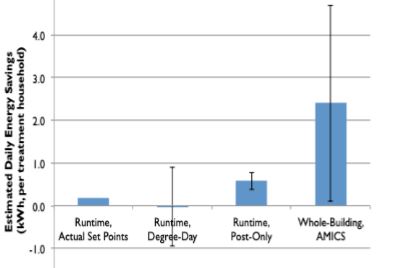Project Info
COMPLETE
 Project Title
Project Title
 Project Title
Project Title
EE Savings from Optimized Connected Thermostats
Project Number ET17SCE8010 Organization SCE End-use HVAC Sector Residential Project Year(s) 2017 - 2018Description
This assessment involves recruiting current customers to participate in a simple schedule optimization program via push notifications from connected thermostats. This optimization program will make small temperature adjustments one degree per week for up to three week to arrive in a new thermostat schedule. This assessment will test for EE potential and coincidental demand peak shaving.
Project Report Document
Loading PDF Preview...
